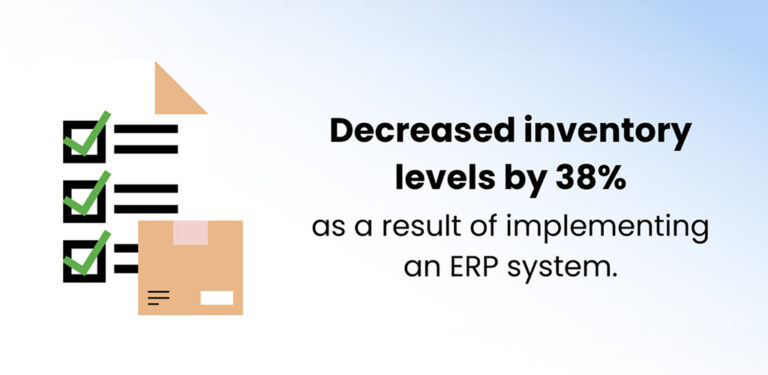In today’s fast-paced business environment, the question of whether your Enterprise Resource Planning (ERP) investment is yielding a positive return on investment (ROI) is crucial. Understanding how ERP systems enhance operational efficiency and reduce costs can help businesses gauge their effectiveness.
How ERP Improves Operational Efficiency and Reduces Costs
One of the primary benefits of ERP systems is their ability to centralize data management across various departments. This integration minimizes data silos, enhances communication, and facilitates informed decision-making. By automating routine tasks such as inventory management and order processing, ERP systems significantly reduce manual effort and errors, leading to faster operations and lower operational costs.
According to a survey, 62% of companies reported that their ERP systems reduced costs, particularly in purchasing and inventory management, where savings of up to 30% were noted. Furthermore, businesses can expect reductions in IT costs by 40% and decreased inventory levels by 38% as a result of implementing an ERP system.

For instance, companies like Amazon and Walmart leverage ERP technology to optimize their supply chain management and operational processes. These systems allow for advanced analytics that improve decision-making capabilities and customer engagement, ultimately driving down costs associated with inefficiencies.
Moreover, a manufacturing company that implemented an ERP system reported a dramatic reduction in manual inventory checks, which not only saved time but also minimized errors in order fulfillment. This shift allowed staff to focus on higher-value activities, effectively lowering labor costs.
Real-Life Case Studies Showcasing ERP-Driven Business Growth
Several businesses have successfully harnessed the power of ERP systems to drive growth. Take N&N Moving Supplies, for example. After implementing an ERP system to manage its accounting and payroll processes across multiple locations, the company reduced payroll processing time by 84% and improved accuracy in labor-cost tracking. This efficiency enabled them to balance accounts faster and gain insights into labor-cost trends.
Another compelling case is Green Rabbit, a logistics provider specializing in perishable goods. After transitioning from disparate systems to a unified ERP solution, Green Rabbit was able to triple its order volume without compromising service quality. The integrated system eliminated inventory errors and allowed for real-time data analysis, which is critical for managing complex supply chains.
Key Metrics for Evaluating ERP ROI
To effectively measure the ROI of an ERP system, businesses should establish clear metrics aligned with their goals. Key performance indicators (KPIs) include:
- Productivity Gains: Measure improvements in order fulfillment times and employee output. Organizations report productivity improvements of up to 78% after implementing ERP systems.
- Cost Savings: Track reductions in manual labor, error rates, and optimized resource allocation.
- Time-to-Value: Evaluate how quickly the organization can realize benefits post-implementation. Companies often realize significant benefits shortly after implementation; for example, a survey revealed that 96% of respondents found their ERP systems either “very successful” or “somewhat successful” in reducing costs within the first year.
For example, a well-implemented ERP system can lead to significant cost reductions through enhanced inventory management and streamlined financial processes. Companies often report lower carrying costs and improved accuracy in financial reporting as direct results of utilizing an ERP system.
However, it is worth noting that calculating ROI of an ERP implementation is not straightforward. This is because it encompasses both tangible (quantifiable) and intangible (qualitative) benefits. While tangible benefits such as cost savings and productivity gains can be easily measured, intangible benefits—like improved employee morale, enhanced customer satisfaction, and better decision-making capabilities—are often more challenging to quantify. These qualitative improvements, however, can significantly impact overall business efficiency and long-term success.
Summary
In conclusion, assessing whether your ERP investment is paying off requires a thorough evaluation of operational efficiencies gained and cost savings realized. By focusing on key metrics such as productivity gains and time-to-value, organizations can better understand the transformative impact of their ERP systems on overall business growth. The success stories of companies like N&N Moving Supplies and Green Rabbit serve as powerful reminders that when implemented correctly, ERP systems can unlock substantial value and drive long-term success.




